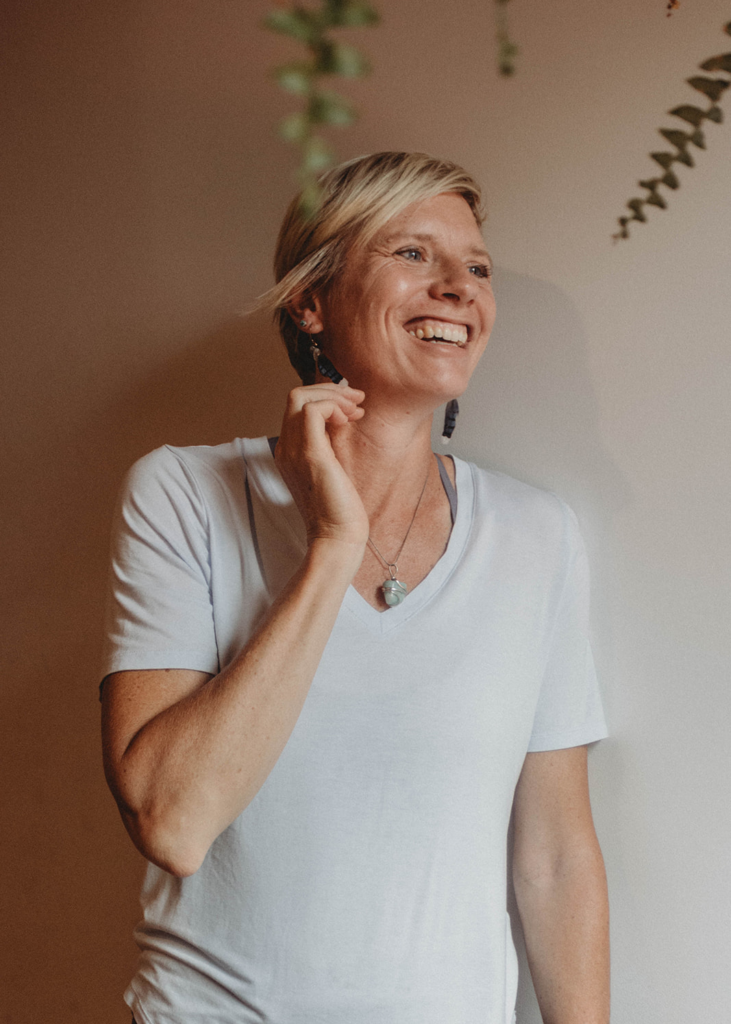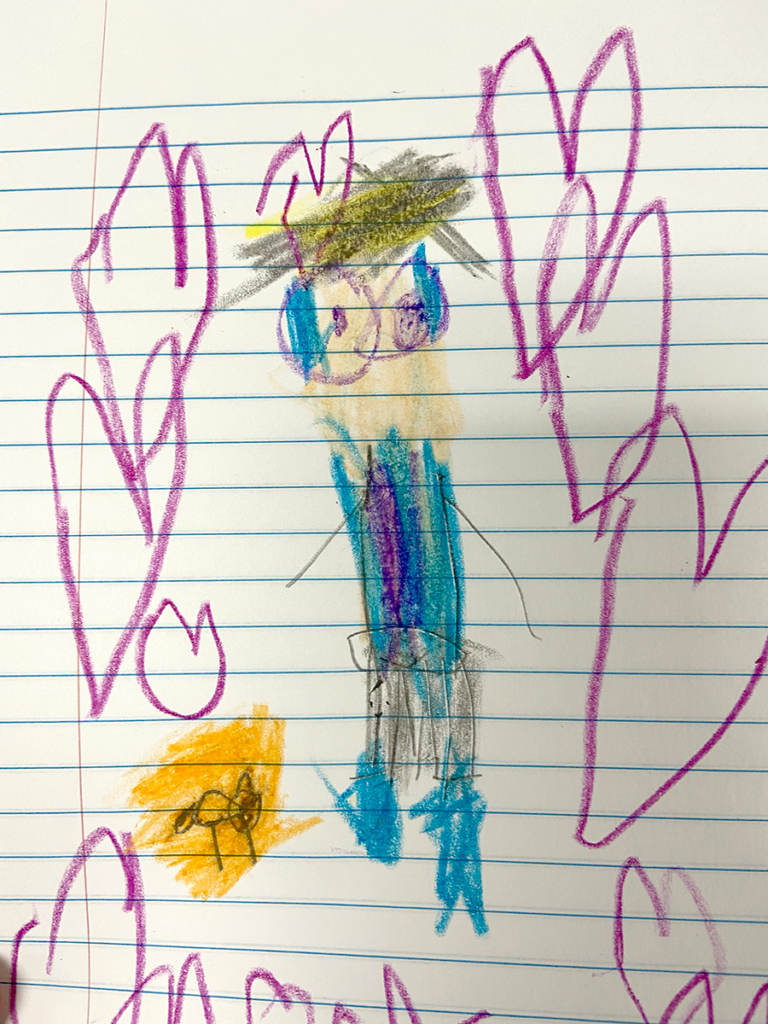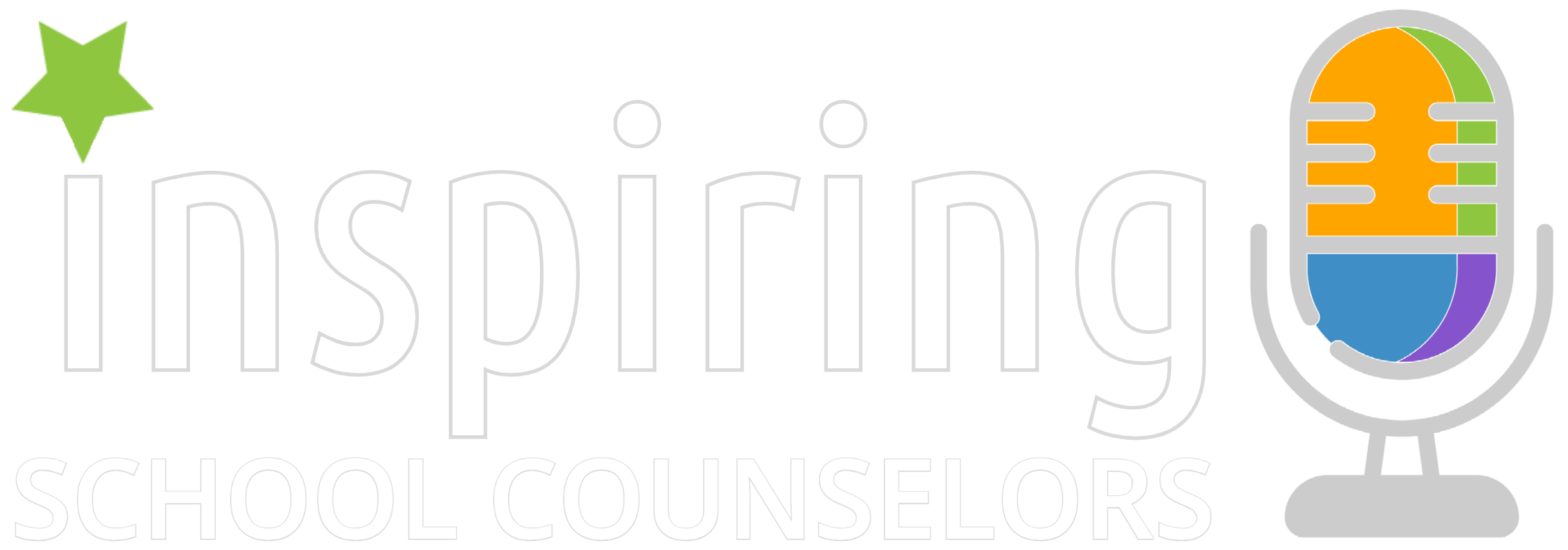The work Kara Schmidt does with schools and students goes beyond yoga and mindfulness practices. She helps build students’ resilience so they can get back to learning.

This Week's Storyteller

Kara Schmidt is a Resilience Coach who works with schools and adults in mindful movement including yoga and mindfulness practices, but much more. A key part to her programs is teaching basic neuroscience because she believes that when kids (and adults) understand and have language for what is happening in their own nervous systems, it empowers them (and all of us!) to make better choices in response to stress, adversity and big emotions. Kara lives in an old tomato factory warehouse with her husband, three cats, and two dogs.
Resources
To learn more about mindfulness, visit Kara’s website, So IN Body.
Kara posts about mindfulness, nervous system regulation, and movement on:

Share YOUR Story!
 Do you have a touching or funny (or both) story about school counseling? We want to hear it! Drop us a line or record your story with our online Sound Booth.
Do you have a touching or funny (or both) story about school counseling? We want to hear it! Drop us a line or record your story with our online Sound Booth.
If you have questions or need help, let us know!
Subscribe
Encouraging Words for School Counselors is also available on these podcast apps and others. If you can’t find the podcast on your favorite app, let us know and we’ll make sure we get there. If you prefer to listen in your browser, visit https://inspiresuccess.org/podcast every week for a new episode. For new episode notifications and more, follow Inspire Success on Facebook, Instagram, or Twitter.
Transcript
Matt Fleck:
Welcome to springtime, everyone, and another edition of the Encouraging Words for School Counselors podcast. I’m your host Matt Fleck with Inspire Success. Thanks to Lilly Endowment for underwriting this podcast with short stories featuring school counselors about school counseling experiences.
Mindfulness is one of those terms and practices that is very much in vogue these days, primarily because mindfulness strategies work. Kara Schmidt began teaching mindful movement 20 years ago to help address her own struggles with depression and anxiety. Over the last two years she’s been working with school counselors and students at two elementary schools and now two high schools focused not only on mindfulness but also resiliency in order to help students address stress and emotional regulation.
Kara Schmidt:
They have us back every year. This is our third year because they’ve noticed that it does make a difference in behavior and kids getting along, and then, of course, that helps the whole classroom environment and everybody learns better.
Matt:
As part of her discussions with students on mindfulness and resiliency, Kara has a lesson on gratitude that sometimes goes off in a different direction.
Kara:
What I noticed in a few classrooms, it didn’t happen in every classroom, but there were kids that in thinking about who and what they were grateful for, they started to think about either pets or people in their lives who have died and so it brought up sadness. And so that was an opportunity for us to first really acknowledge the kids’ sadness and that sadness is an emotion that we all have and that it’s totally healthy and good to feel sadness. Um, and that we need times and places and people in our lives that we can feel sadness with and be okay with that, but that it’s also okay to feel sadness and gratitude at the same time. Like, it’s possible. Because you’re sad doesn’t mean that you can’t feel gratitude. Not that we’re trying to force that or anything, but that it’s possible.
Matt:
As adults, we may feel awkward about letting students express emotions like sadness, says Kara, even though it can actually enable students to get back to learning.
Kara:
In one classroom, there was a little girl. As the kids started to draw and write what they were grateful for, I just walk around the room and just check in with them and see what they’re drawing, and they have a chance to show me or tell me a story.
This little girl was just sitting there looking at her blank paper, obviously sad, and so I started talking to her and she was just telling me how sad she was about her grandfather who died. And so we started to talk about, well, what did your grandfather bring to your life? Can you still feel his love, even though he’s not here? Are there things that you remember doing with him that when you think about it makes you happy, even though you’re sad that he’s not here? And she was able to start drawing a picture of her grandfather.
And so I went around to other kids and when I came back, she had this beautiful, just full of color picture, of her grandfather in a first grader’s, you know, rendition, and her mood and her spirit was just so much more light and lifted. And you could tell, she hadn’t necessarily let go of the sadness, but she was able to tap into that gratitude and that love and let it be there as well, so that the sadness didn’t just pull her down into a place that it was hard for her then to be present in class and participate in other ways.
Matt:
For educators and counselors, Kara says just the practice of taking a moment to ask yourself “how am I doing” during the day and trying to feel our breath – even for 15 seconds in the midst of the chaos, like in a bathroom stall or by closing the office door – can be very helpful.
Kara:
The other thing I really like is using our vision to be able to just kind of reground and reorient to this time in this place. So, looking around and settling your eyes on, maybe just one thing that you find pleasant to look at that brings a sense of either peace or joy or happiness, or just somehow draws you into the moment, for just a few moments. And that can easily be done in a few seconds and will usually lead to the breath changing, deepening. If you just give yourself a moment.
So teachers may even want to put something specifically in their classroom that is a visual representation of how they want to show up as a teacher. Like, I want to be this kind of person – and I’m sure most of them, you know, they want to show up as someone who’s centered and present and calm, right? So, if they have something in their room, then, that is – because sometimes even the breath, it’s hard to remember like, oh, I need just to pause – but if there’s a visual representation that reminds them, “Oh, when I look at this, I just, oh, I just go into myself for a moment. I feel myself again.” And then the breath will automatically become a part of that.
Matt:
Practicing these techniques in times when things aren’t as stressful, can help create the neural pathways that will kick in automatically during times of stress, says Kara. Which are good reminders for us and for our students.
By the way, you can see a photo of the colorful picture the student drew of her grandfather on our website – inspiresuccess.org/podcast – where you can also subscribe to the podcast using your favorite podcast app and – if you would be so kind – you can leave us a story of a counseling experience that you found humorous or touching using our online soundbooth. It’s all in one place at inspiresuccess.org/podcast.
Thanks for listening. We’ll have more for you, next week.

Kara has been a total inspiration and an incredible partner in our community coalition, Thrive Orange County. Kara’s Mindful – Resilience School Program started from connections with school teachers, administrators, physical and mental health providers, and concerned citizens who came together to ask tough questions and solve tough problems related to childhood adversity. We are so grateful for Kara’s dedication and compassion for the youth of our community! Watch this video for information about Thrive OC https://youtu.be/OpECYIdW2-k